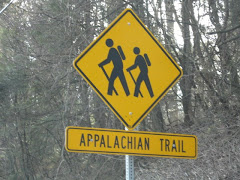Not all hiking is done on dirt, city hiking can be rewarding as well as educational. Boston's Freedom Trail can be just as challenging to the body as any National Park.
For newcomers to Boston, this walk is well marked by colored lines painted onto the streets and sidewalks, but you'll want to stop by any visitor center for a more detailed map.
Beginning in the heart of Boston, on Tremont Street, the Boston Common is America's oldest park. These 44 acres were once used as a common pasture for grazing cattle owned by the townspeople of Boston. Reverend Martin Luther King spoke here, Pope John Paul II said mass here, and Gloria Steinem advanced the feminist revolution on these grounds. After a walk across the Commons to Beacon Street, you will find the world famous "Cheers" bar. Stop in for some pictures, or just to say hi to Sam.
Continuing east on Beacon will bring to to the next stop, the State House. Completed on January 11th, 1798, this building was designed by Charles Bulfinch. It's gold dome, once made of wood, was later overlaid with copper by Paul Revere. And for all you trivia buffs, the land was originally used as John Hancock's cow pasture!
At the end of Beacon, turn right, onto Park Street. At the corner of Park and Tremont, you will find Park Street Church. This church was built in 1809 and boasts a 217 ft steeple. It is here that Samuel Francis Smith first sung "America" (My Country 'Tis of Thee) on July 4th, 1831.
Following Tremont Street north, you will come to the Granary Burying Ground. Buried here are: John Hancock, Paul Revere, Samuel Adams, James Otis, all five of the Boston Massacre victims, Benjamin Franklin's parents, Peter Faneuil and believe it or not, Mother Goose.
Just north of the Granary Burying Ground, on the corner of Tremont and School Streets, we find King's Chapel and Burying Ground. Built in 1688, it was a tiny church. So small, that by 1749, it's congregation outgrew the structure and a new one was built around it, to avoid disrupting the services. Paul Revere crafted the church's 2,347 pound bell in 1816.
Following the trail on School Street, you will pass the Benjamin Franklin statue and Boston Latin School. America's first public school, the Boston Latin School offered instructions to boys free of charge (girls remained privately schooled. The doors finally opened to the ladies in 1972). Benjamin Franklin was the most famous student tutored within.
At the end of School Street turn right onto Washington Street, southbound, for a detour to the Old South Meeting House. When 5000 angry colonists gathered here on December 16, 1773, they declared "no tax on tea!" and they started a revolution. Built in 1729 as a Puritan house of worship, it was the largest building in colonial Boston. More trivia: Benjamin Franklin was baptized here.
Turn right, heading now north on Washington Street to the corner of Washington and State Streets. Here, at the Old State House, you will find a simple building, with a simple balcony. It was from that humble balcony, in 1776, that the Declaration of Independence was first read to the people of Boston. Look around on the sidewalk, here you will find a marker for the Site of the Boston Massacre. It was on this spot on March 5, 1770, that the skirmish between a few "red coats" and a group of Boston citizens left five Bostonians dead.
Halfway through our hike and I'm beginning to tire. Tomorrow, we'll relax and grab some chowder before continuing on our hike into the past.




No comments:
Post a Comment